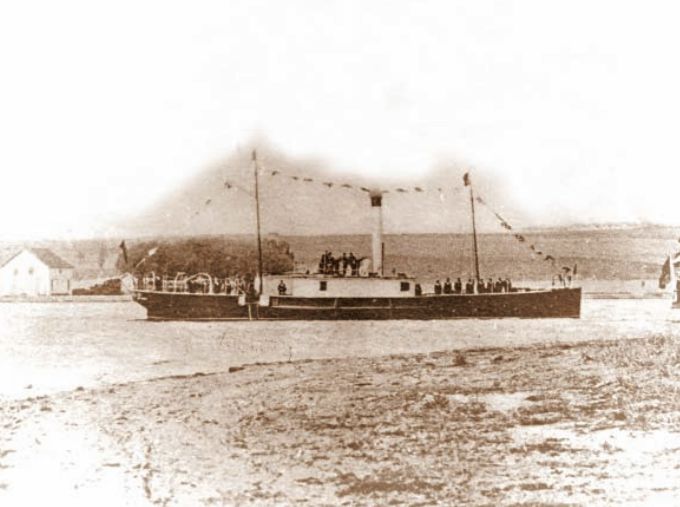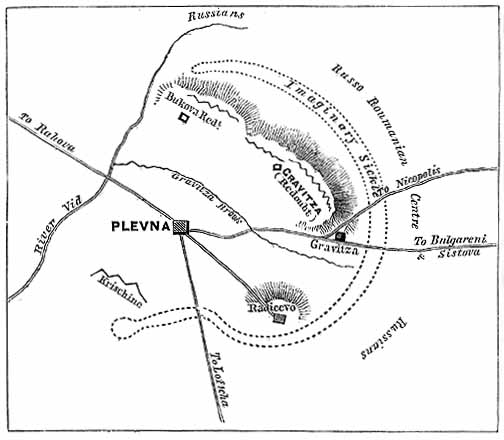|
Romanian War Of Independence
The Romanian War of Independence () is the name used in Romanian historiography to refer to the phase of the Russo-Turkish War (1877–78), in which Romania, fighting on the Russian side of the war, gained independence from the Ottoman Empire. On , Romania and the Russian Empire signed a treaty at Bucharest under which Russian troops were allowed to pass through Romanian territory, with the condition that Russia respected the integrity of Romania. Consequently, the mobilization of the Romanian troops also began, and around 114,000 soldiers were massed in the south of the country to defend against an eventual attack of the Ottoman forces from south of the Danube. On , Russia declared war on the Ottoman Empire and its troops entered Romania through the newly built Eiffel Bridge, on their way to the Ottoman Empire. Due to great losses, the Russian Empire asked Romania to intervene. On , the first Romanian Army units crossed the Danube and joined forces with the Russian Army. Roman ... [...More Info...] [...Related Items...] OR: [Wikipedia] [Google] [Baidu] |
Danube
The Danube ( ; see also #Names and etymology, other names) is the List of rivers of Europe#Longest rivers, second-longest river in Europe, after the Volga in Russia. It flows through Central and Southeastern Europe, from the Black Forest south into the Black Sea. A large and historically important river, it was once a frontier of the Roman Empire. In the 21st century, it connects ten European countries, running through their territories or marking a border. Originating in Germany, the Danube flows southeast for , passing through or bordering Austria, Slovakia, Hungary, Croatia, Serbia, Romania, Bulgaria, Moldova, and Ukraine. Among the many List of cities and towns on the river Danube, cities on the river are four national capitals: Vienna, Bratislava, Budapest, and Belgrade. Its drainage basin amounts to and extends into nine more countries. The Danube's longest headstream, the Breg (river), Breg, rises in Furtwangen im Schwarzwald, while the river carries its name from its ... [...More Info...] [...Related Items...] OR: [Wikipedia] [Google] [Baidu] |
Ottoman Porte
The Sublime Porte, also known as the Ottoman Porte or High Porte ( or ''Babıali''; ), was a synecdoche or metaphor used to refer collectively to the central government of the Ottoman Empire in Istanbul. It is particularly referred to the building which housed the office of the Grand Vizier, Ministry of Foreign Affairs, Ministry of the Interior, and the Supreme Council of Judicial Ordinances. Today it houses the office of the Istanbul governerate. History The name has its origins in the old practice in which the ruler announced his official decisions and judgements at the gate of his palace. This was the practice in the Byzantine Empire and it was also adopted by Ottoman Turk sultans since Orhan I. The palace of the sultan, or the gate leading to it, therefore became known as the "High Gate". This name referred first to a palace in Bursa, Turkey. After the Ottomans had conquered Constantinople, now Istanbul, the gate now known as the Imperial Gate (), leading to the outermo ... [...More Info...] [...Related Items...] OR: [Wikipedia] [Google] [Baidu] |
Vidin
Vidin (, ) is a port city on the southern bank of the Danube in north-western Bulgaria. It is close to the borders with Romania and Serbia, and is also the administrative centre of Vidin Province, as well as of the Metropolitan of Vidin (since 870). An industrial, agricultural, and trade centre, Vidin has a fertile hinterland renowned for its wines. Name The name is archaically spelled as ''Widdin'' in English. Its older form ''Dunonia'' meant "fortified hill" in Celtic with the ''dun'' element found frequently in Celtic place names. It is known as ''Diiu'' in Romanian. Geography Vidin is the westernmost important Bulgarian Danube port and is situated on one of the southernmost sections of the river. The New Europe Bridge, completed in 2013, connects Vidin to the Romanian town of Calafat on the opposite bank of the Danube. Previously, a ferry located from the town was in use for that purpose. History Vidin emerged at the place of an old Celtic settlement known as ''D ... [...More Info...] [...Related Items...] OR: [Wikipedia] [Google] [Baidu] |
Ivan Ganetsky
Ivan Stepanovich Ganetsky (October 8, 1810 – 1887) was an Imperial Russian division commander. He fought in wars in the Caucasus, Poland and against the Ottoman Empire. Biography Born on 26 September (8 October) 1810 in the noble dvoryan Ganetsky family of Polish origin. His mother descends from the Eysymontt () family. He made successful military career in the Imperial Russian Army The Imperial Russian Army () was the army of the Russian Empire, active from 1721 until the Russian Revolution of 1917. It was organized into a standing army and a state militia. The standing army consisted of Regular army, regular troops and ... and in 1877 was notable commander in the Siege of Plevna, part of the Russo-Turkish War of 1877–1878. Awards *Order of Saint George, 3rd degree, 1877 *Order of Saint George, 4th degree, 1852 *Order of Saint Vladimir, 1st class, 1883 *Order of Saint Vladimir, 2nd class, 1853 *Order of Saint Vladimir, 3rd class, 1853 *Order of Saint Alexander Nevsky ... [...More Info...] [...Related Items...] OR: [Wikipedia] [Google] [Baidu] |
Mihail Cerchez
Mihail Cerchez Cristodulo (8 June 1839 – 12 July 1885) was a Romanian general who fought at the Siege of Plevna and the battles of and Vidin during the Romanian War of Independence. Biography Descended from an old ArmenianStoica Lascu /Dobrudjan contributions to the development of contemporary armenology family, he was born in Bârlad and studied at the Academia Mihăileană in Iași. He volunteered into the army as a cadet in 1855, and rose rapidly through the ranks: sergeant in 1856, second lieutenant in 1857, lieutenant in 1858, captain in 1860, and major in 1863. Promoted to lieutenant colonel in 1867 and colonel in 1870, Cerchez served in the Romanian Army during the Romanian War of Independence (1877–1878). At the start of the war, he was commander of the 2nd and 1st Infantry Divisions of the Danube defense, which protected the rear of the armed forces fighting on the front, in Bulgaria. Later, as head of the Reserve Division, he was instrumental in surrounding the O ... [...More Info...] [...Related Items...] OR: [Wikipedia] [Google] [Baidu] |
Oryahovo
Oryahovo ( ) is a port city in northwestern Bulgaria, part of Vratsa Province. It is located in a hilly area on the right bank of the Danube, just east of the mouth of the river Ogosta, a few more kilometres downstream from where the Jiu flows into the Danube on Romanian territory. The town is known for the ferry service that connects it to the Romanian town of Bechet across the river. There are also plans by local private companies for a bridge across the Danube. History Ancient history and Middle Ages The town's name has evolved through the course of history, with names such as ''Vrhov'', ''Orezov'', ''Oreov'', and ''Rahovo'' being mentioned in documents until the current one was officially established in 1886. The area around Oryahovo has been inhabited since ancient times, as archaeological research has proven with findings from the early Neolithic to the Late Middle Ages. A fortress called ''Kamaka'' (), which existed from the 9th to the 14th century, is located west of O ... [...More Info...] [...Related Items...] OR: [Wikipedia] [Google] [Baidu] |
Siege Of Plevna
The siege of Plevna or Pleven, was a major battle of the Russo-Turkish War of 1877–1878, fought by the joint army of the Russian Empire and the Kingdom of Romania against the Ottoman Empire. After the Russian army crossed the Danube at Svishtov, it began advancing towards the centre of modern Bulgaria, with the aim of crossing the Balkan Mountains to Constantinople, avoiding the fortified Turkish fortresses on the Black Sea coast. The Ottoman army led by Osman Pasha, returning from Serbia after a conflict with that country, was massed in the fortified city of Pleven, a city surrounded by numerous redoubts, located at an important road intersection. After two unsuccessful assaults, in which he lost valuable troops, the commander of the Russian troops on the Balkan front, Grand Duke Nicholas of Russia insisted by telegram on the help of his Romanian ally King Carol I. King Carol I crossed the Danube with the Romanian Army and was placed in command of the Russian-Roman ... [...More Info...] [...Related Items...] OR: [Wikipedia] [Google] [Baidu] |
Romanian Leu
The Romanian leu (, plural lei ; ISO code: RON; numeric code: 946) is the currency of Romania. It is subdivided into 100 (, singular: ), a word that also means "money" in the Romanian language. Etymology The name of the currency means "lion", and is derived from the Dutch thaler ( "lion thaler/dollar"). The Dutch ''leeuwendaalder'' was imitated in several German and Italian cities. These coins circulated in Romania, Moldova and Bulgaria and gave their name to their respective currencies: the ''Romanian leu'', the ''Moldovan leu'' and the ''Bulgarian lev''. History First leu: 1867–1947 In 1860, the Domnitor Alexandru Ioan Cuza attempted to create a national ''românul'' ("the Romanian") and the ''romanat''; however, the project was not approved by the Ottoman Empire. On 22 April 1867, a bimetallic currency was adopted, with the leu equal to 5 grams of 83.5% silver or 0.29032 grams of gold. The first leu coin was minted in Romania in 1870. Before 1878 t ... [...More Info...] [...Related Items...] OR: [Wikipedia] [Google] [Baidu] |
Tribute
A tribute (; from Latin ''tributum'', "contribution") is wealth, often in kind, that a party gives to another as a sign of submission, allegiance or respect. Various ancient states exacted tribute from the rulers of lands which the state conquered. In the case of alliances, lesser parties may pay tribute to more powerful parties as a sign of allegiance. Tributes are different from taxes, as they are not collected in the same regularly routine manner that taxes are. Further, with tributes, a recognition of political submission by the payer to the payee is uniquely required. Overview The Aztec Empire is another example, as it received tribute from the various city-states and provinces that it conquered. Ancient China received tribute from various states such as Japan, Korea, Vietnam, Cambodia, Borneo, Indonesia, Sri Lanka, Nepal, Myanmar and Central Asia. Aztec Empire Tributes as a form of government The Aztecs used tributes as a means for maintaining control over con ... [...More Info...] [...Related Items...] OR: [Wikipedia] [Google] [Baidu] |
Mihail Kogălniceanu
Mihail Kogălniceanu (; also known as Mihail Cogâlniceanu, Michel de Kogalnitchan; September 6, 1817 – July 1, 1891) was a Romanian Liberalism, liberal statesman, lawyer, historian and publicist; he became Prime Minister of Romania on October 11, 1863, after the United Principalities, 1859 union of the Danubian Principalities under ''Domnitor'' Alexandru Ioan Cuza, and later served as List of Romanian Foreign Ministers, Foreign Minister under Carol I of Romania, Carol I. He was several times List of Romanian Ministers of the Interior, Interior Minister under Cuza and Carol. A polymath, Kogălniceanu was one of the most influential Romanian intellectuals of his generation. Siding with the moderate Liberalism and radicalism in Romania, liberal current for most of his lifetime, he began his political career as a collaborator of List of rulers of Moldavia, Prince Mihail Sturdza, while serving as head of the Iași National Theatre, Iași Theater and issuing several publications t ... [...More Info...] [...Related Items...] OR: [Wikipedia] [Google] [Baidu] |






